






































































































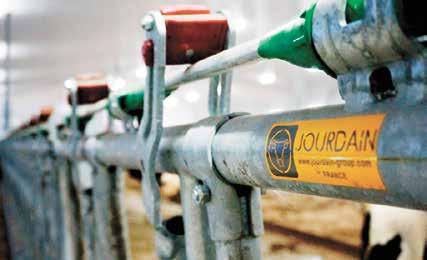
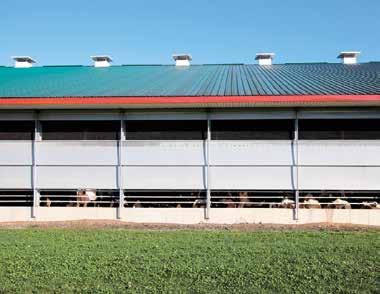
 By Abby Wiedmeyer abby.w@dairystar.com
By Abby Wiedmeyer abby.w@dairystar.com
ORANGEVILLE, Ill. –Mark Baker begins and ends his days with cows. In between, he runs Stateline Farm Rescue, an instructional course on grain bin rescue which is delivered to re departments, medical students and other emergency medical service people.
Baker runs a dairy farm with his wife, Kim, and sons Chad and Zach. The family milks 110 cows near Orangeville. The cows are housed in a sand-bedded freestall barn and milked in the original stanchion barn. Chad and Zach do all the mixing while Baker does all the scraping. They have hired hands to help with milking, but everyone lls in when needed.
The inspiration for launch-
ABBY WIEDMEYER/DAIRY STARThe grain bin simulator is part of Stateline Farm Rescue’s training program. With the simulator, par cipants can prac ce grain bin entrapment rescue, auger entrapment rescue and grain bin cu ng rescue scenarios.
ABBY WIEDMEYER/DAIRY STARMark Baker takes a break Sept. 7 on his farm where he milks 110 cows with his wife, Kim, and sons, Chad and Zach, near Orangeville, Illinois. In between chores, he runs Stateline Farm Rescue, a farm safety training program.
ing a farm rescue training course came from Kim losing her rst husband in a farm accident more than 40 years ago.
“It just resonated with me because she told me about the re department showing up, and they just didn’t know what to do,” Baker said. “She was basically doing the rescue herself.”
Since Stateline Farm Rescue has taken off, the initiative has seen global involvement. Baker and his training crew have talked with various universities and aided in start-
ing a program for the state of Kansas. All of the providences in Canada have been trained through the program. Australia sent representatives of its re academy to attend a class with Stateline Farm Rescue and then modeled their own program with the information they learned. The program has also had participation from people residing in France.
“I think it is really cool that I had a part in getting a country’s grain rescue program up and running,” Baker said.
Baker began the business
after joining the local re department and realizing how little experience the re training offered when it came to agricultural-related accidents.
“When I joined the re department in my local community, it just kept gnawing at me that we don’t know anything,” Baker said. “We practice for car accidents and house res, but when is the last time the local department practiced a tractor roll over, a grain entrapment?”

The training effort began 30 years ago when Baker worked with the national training center for agricultural safety and got a program up and running in Iowa. Initially, Baker commuted back and forth to teach out of Iowa.
“I never thought of myself as a teacher or instructor by any stretch of the imagination,” Baker said. “But, I had years of practice in the barn.”
Baker said he knew where the gaps in training were at his local department and used his practical knowledge to ll those gaps. He stopped teaching out of Iowa and started Stateline Farm Rescue after realizing a mobile training program would be more effective.
“What we do is we take the show on the road so we come to them,” Baker said. “Then there are no boundaries.”


The grain simulator used for training was designed and built on the Bakers’ farm and is hauled on a trailer pulled with a pickup truck. The simulator holds 200 bushels of corn and replicates three scenarios: live grain entrapment, auger entrapment and side cutting of the sheets for a scenario where a victim is fully engulfed in the grain bin.

The goal when training medical students without any agricultural background is to help them realize that a lot of times, farm accidents are unique.







“We try to bring them the knowledge and scenarios that they are going to encounter and how graphic these accidents are going to be,” Baker said. “Farmers do not pick up the phone and call 911. They either drive themselves in or call their wife.”
The training program has worked in tandem with The Rural Medical Education Program at the University of Illinois College of Medicine Rockford, which lowers the tuition for the medical student if they commit to practice in a rural area once becoming licensed. The knowledge provided in Stateline Farm Rescue is often the rst rural experience for the students.

Classes are in the form of an eighthour day and focus on grain bin extrication, conned space entry procedures, grain auger entrapment, grain bin cutting, dust explosion, EMT rescue considerations and current Occupational Safety and Health Administration regulations. Classes can also include tractor and combine rollover courses. The classes are instructed by Baker and ve others. The other instructors have an agricultural background and include certied emergency responders, reghters and one ight nurse.



“They are the most gifted, kind and talented people you’d ever want to nd,” Baker said. “I have no idea how I was blessed enough to have these people. Their help makes it really easy for me.”
Baker said he feels it is important to keep the dairy going, even though the farm rescue program could probably stand on its own. He credits a good herd of cows and nice buildings for keeping him grounded to dairy.
“I just feel that this is a nice little dairy,” Baker said. “I think it keeps us together as a family.”


Jordan


-


much







original fences were purchased 20 years ago and they have held up well. I enjoy not having to paint them. Recently, I purchased fences with rounded corners. These have been very sturdy and the ends cannot pop out of place. Both types of fences are very flexible and safe for my horses.”










- John Bengfort, Bluff Country Equine Winona, MN

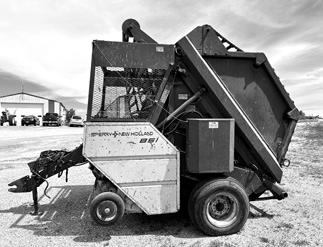
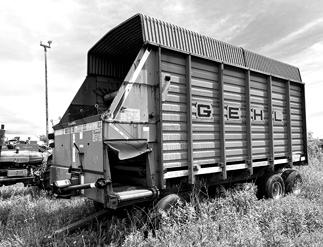









The September Federal order Class III benchmark milk price was announced at $19.82 per hundredweight, down 28 cents from August but $3.29 above September 2021. Unfortunately, it’s the lowest Class III since December 2021 and put the nine-month average at $22.24, up from $16.75 a year ago, $17.48 in 2020 and $16.11 in 2019.
Late Friday morning Class III futures portend an October price at $22.05, with November at $21.85 and December at $21.19. If realized, the 2022 average would be $22.10. The U.S. Department of Agriculture has forecast $21.65 for 2022 and $19.70 for 2023.
The September Class IV price is $24.63, down 18 cents from August, $8.27 above a year ago and the lowest Class IV since February. The Class IV average is at $24.81, up from $15.26 a year ago, $13.53 in 2020 and 16.21 in 2019.
On a brighter note, CME butter set a new record high Thursday, hitting $3.2675 per pound. It closed the next day at $3.2175, up 7.25 cents on the week and $1.4975 above a year ago, with a total 35 loads nding new homes on the week.

“The interest is for use now because building inventory at these levels is expensive,” StoneX said.

Dairy Market News said cream availability has grown in recent weeks for Central churns. With hurricane-affected states working through the aftermath, cream stayed in the Midwest and Mid-Atlantic areas. Butter demand remains “notably strong,” says DMN, which also reported that cream is tight in the West, though additional loads became available following the storm.


Cheese prices faced headwinds from the GDT this week, but the Dairy Products report helped. The cheddar blocks climbed to $2.03 per pound Thursday but closed Friday at $2.0225 per pound, up 5.50 cents on the week and 21.25 cents above a year ago.
The barrels got to $2.25, highest since June 9, but nished at $2.2250, 2.50 cents higher, 43.50 cents above a year ago and 20.25 cents above the blocks. There were six sales of block on the week and 13 of barrel.
Milk availability increased this week for Class III production in the Upper Midwest, according to DMN. Plant downtime plus the additional milk brought spot prices lower. Cheese sales are meeting or exceeding expectations. Cheese demand is steady from retail and
food service in the West. International demand remains strong, with continued interest from Asia for shipment in second quarter.
Grade A nonfat dry milk closed the week 3 cents lower at $1.54 per pound, 8 cents above a year ago, with seven loads exchanging hands on the week.

The Oct. 3 Daily Dairy Report said the Mexican economy is strong and the combination of a stronger peso and less expensive milk powder is likely to boost U.S. shipments of product there. Let’s hope so.
Dry whey saw a Friday nish at 42.25 cents per pound, down 1.75 cents on the week, and 17.25 cents below a year ago, on two sales for the week at the CME.
Dairy farmers saw small declines in feed prices in August; however, the all milk price fell as well. The month’s milk feed ratio was down for the seventh consecutive month, according to the latest Ag Prices report. The August ratio at 1.70, was down from 1.79 in July but compares to 1.48 in August 2021.
The all milk price average fell to $24.30 per hundredweight, down $1.40 from July, after dropping $1.20 the previous month but is $6.70 above August 2021.
The August national average corn price was $7.24 per bushel, down a penny from July, but 92 cents per bushel above August 2021. Soybeans fell to $15.30 per bushel, down 20 cents from July, but are $1.60 per bushel above August 2021. Alfalfa hay, after hitting a record average $276 per ton in July, was down $1 from July but a whopping $65 per ton above a year ago.
Looking at the cow side of the ledger, the August cull price for beef and dairy combined averaged $90.10 per cwt, down 50 cents from July, $14.10 above August 2021 and $18.50 above the 2011 base average.
Economist Bill Brooks, of Stoneheart Consulting in Dearborn, Missouri, said, “Dairy producers with Dairy Margin Coverage at or above $8.50 will receive a payment for August milk as the margin over feed costs was announced at $8.08.

“August’s drop in the income over feed calculation was the third straight monthly decline. Income over feed costs in August dropped to the lowest level since December 2021 but were above $8 per cwt for the 11th month running. There were no new all-time record high prices for inputs in August, but all three commodities remain in the top 10 for all time high prices, which put feed costs at second highest ever.

“For 2022, milk income over feed costs (using
Sept. 30 CME settling futures prices for milk, corn and soybeans plus the Stoneheart forecast for alfalfa hay) are expected to be $11.88 per cwt, a gain of 19 cents per hundredweight versus the previous month’s estimate. 2022 income over feed would be above the level needed to maintain or grow milk production and $4.09 per cwt above the 2021 level.”
The latest Margin Watch from Chicago-based Commodity and Ingredient Hedging LLC said, “Dairy margins declined slightly over the second half of September on weaker milk prices while feed costs remained largely steady.”
The MW said, “USDA’s cold storage report conrmed a drawdown in dairy product inventories during August which remains a supportive feature for the market.” The MW said the July to August cheese drawdown was the largest since 2018. “Given strong cheese production in August, the stocks gure implies good domestic and export demand, although stocks were still record high for August,” according to the MW.
Butter inventories remained at multi-year lows, according to the MW, and the lowest August inventory gure since 2017. The MW stated that butter production was lower during the month as cream was utilized elsewhere, “a contributing factor to the lower butter stocks.”
USDA’s quarterly grain stocks report showed Sept. 1 corn inventories at 1.377 billion bushels, according to the MW, and “below the average industry estimate of 1.497 billion but with the range of pre-report expectations between 1.295 and 1.575 billion bushels. Soybean stocks were reported at 274 million bushels versus the average industry estimate of 247 million and on the high end of the range of estimates between 220 and 275 million bushels.”
Speaking of crops, the USDA’s latest crop progress report shows 96% of U.S. corn dented, as of the week ending Oct. 2, 4% behind a year ago and 1% behind the ve year average. 75% is rated mature, up from 58% the previous week, 11% behind a year ago and mirrors the average. Harvest is at 20%, up from 12% the previous week and 7% behind a year ago. 52% was rated good to excellent, 7% behind a year ago.
The report also shows 81% of the soybeans dropping leaves, 3% behind a year ago but 2% ahead of the
GLENCOE, Minn. – They may be small, but they made an impact on a Minnesota farm family.


Since 2014, Nigerian Dwarf goats have brought joy and sustenance to the Becker family.
Ed and Tracy Becker and their children, Eddie, Emma and Sam, milk 12 goats and operate Goat Shine near Glencoe.
The Beckers have 65 goats, which includes breeding stock and youngstock. They purchase hay for their goats from their son, Jack, and also feed a mineral mix developed with the help of a nutritionist.
“We’ve come a long way since we started with three does and a buck,” Ed said.

Through Goat Shine, the Beckers direct market goat milk products. The Beckers make soaps and lotions using the milk from their herd.

“The milk is thick,” Ed said. “It’s like a heavy cream and has high butterfat and protein.”

Nigerian Dwarfs kid year-round and, on average, produce 2 quarts of milk per day.
When the Beckers rst started milking goats, they milked by hand twice per day. As the herd grew, they invested in equipment which came with its own challenges. Because the Nigerian Dwarfs are small, the milking equipment had to be retrotted to accommodate the goats’ stature.

“Everything has to be smaller,” Ed said. “You have to try to modify the equipment; even our milking stand is retrotted.”




Prior to milking goats on their current farm, the Beckers milked 100 cows on a farm near Alexandria. Ed and Tracy acquired a couple Alpine goats
because Eddie developed an interest in raising goats.
In 2009, the Beckers sold their farm and moved to Glencoe, taking with them the few goats Eddie had developed a love for.
For Eddie’s 11th birthday in 2011, they added three Nigerian Dwarf goats to their small hobby herd.
“We were no longer running a dairy farm, but we wanted the kids to gain responsibility by caring for something,” Tracy said. “Eddie had always been fond of goats, so that’s really where the herd took off.”
The Becker children began showing the goats through 4-H and competed at the Minnesota State Fair, where they claimed a few grand champion and reserve champion titles.
“I learned so much growing up raising goats,” Emma said. “I enjoy going out to the pens and sorting through the herd with Dad determining who should be sold and who we should keep for breeding and milking.”
The Beckers focus on body capacity, sound feet and legs, and milk production when making mating decisions. Components and type are also of interest to the Beckers.










The Beckers have purchased bucks from a farm in southeast Minnesota but plan to purchase a buck from out of state to expand their genetics.
“It’s difcult nding other larger herds of Nigerian Dwarfs because so much of the breed is used for pets or small operations where they aren’t necessarily using the goats for milk,” Tracy said.





In addition to being part of the farm, the goats helped Eddie, who developed eczema when he was 14.

“We went to the dermatologist to try and nd a solution, but none of the creams were working,” Tracy said. “Eventually the doctor gave us a steroid cream that he said we couldn’t use for too long or Eddie’s skin would thin. We kept thinking there had to be a better way.”







In 2015, the Beckers made lotion from their goat milk. They developed their own recipe, and Eddie’s skin began to clear. Tracy now does most of the soap and lotion making.
The family began to give lotion as
gifts to family and friends. The stellar reviews initiated their line of soaps. They used to sell at a variety of stores near the Twin Cities. Now, they sell their products online and at Wright Farms Market in Hutchinson.
“It was like one thing led to another, and then as somewhat of a joke, we started goat yoga,” Ed said. “That took off way more than I ever expected.”
Tracy agreed.




“This combination of goat-related products and activities has allowed me to take part-time work so I can help manage some of the goat business,” she said.
Goat yoga began on the farm in 2016 and spurred the use of the goats for therapy. The Beckers began bringing the goats to nursing homes and have also provided goats for business retreats.

“We realized the happiness that the goat kids were bringing people, because they are so cute and cuddly; we had to offer that joy to others,” Tracy said.
“The goats will do cuddle sessions, and you can see how joyful everyone becomes after getting that experience.”




Sanborn, MN
Meadowlands
Farmers Co-op 6.7313.66

Almena, WI
Synergy Cooperative 6.1813.11
St. Cloud, MN
Westby, WI
6.5313.46
Co-op 6.4112.91

Cadott, WI
Cadott




Pipestone, MN
Muscoda, WI
Monona, IA
Service 6.2813.21
6.8313.76
6.4512.86
6.5313.39
6.5213.21
Watertown, SD
Whitewater, WI
Dennison, MN
Belleville, WI
6.6313.41

6.5313.20
6.3213.31
Co-op 6.5313.21
Glenwood, MN
6.5713.69
In conversations with some well-respected merchandiser friends, I have been hearing feedback on how challenging commodity markets have been to trade. I could fill multiple VisorView columns discussing market events that happened over the past year that have never been seen before. Watching macro headlines, it appears that more of the same should be expected over the coming year.

World commodity supplies remain limited across many categories including milk. It seems that the biggest risks to maintaining strong prices in this environment are debt implosions around the globe at a macro level, higher interest rates, and dollar denominated monetary deflation. Dairy markets have historically been extremely sensitive to a strong dollar and its monetary impact on U.S. exports. Surprisingly, an 18%-dollar index rally in 2022 has not yet affected milk exports with any significance. It may take a miracle to see that last through 2023.






CME Group spot barrel cheddar prices have been strong in recent weeks. As of this writing they are trading over $2.20/lb. This has caused the block/barrel spread to go inverse 28 cents. The only other time barrels traded a bigger premium to blocks was in November 2019 when
barrels traded 37 cents over blocks. This could start to raise havoc with producer pay prices if their handling plant is impacted by the spread.

U.S. butter prices continue to set new all-time record highs. Spot trading has moved above $3.20. Dairy Market News is stating that there may be growing consumer push back at these prices. EU butter has been holding solidly above $3/lb. NZ butter is being reported at $2.40/lb. which is a steep discount to U.S. and EU export prices.
The whey market continues to struggle with spot prices trading in the mid 40 cent range. I was surprised when I looked at the Foreign Agricultural Services data which reflected record monthly export sales of whey for May, June, and July 2022. It appears that cheap whey prices have been buying in U.S. export demand to keep supplies from growing but hasn’t yet supported U.S. prices.












U.S. nonfat dry milk has been trading between $1.541.58. This is in line with international market prices. As with whey, there are growing demand concerns at these elevated prices for EU and U.S. supplies.
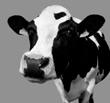
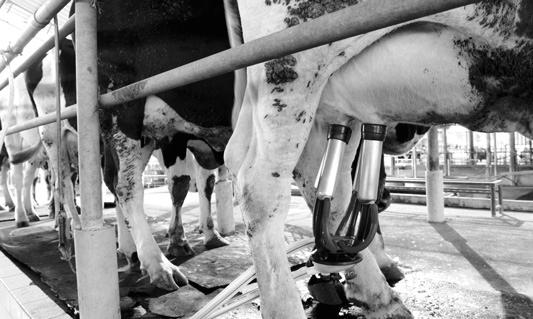
Fort Atkinson Hay
Ft. Atkinson, Iowa • 563-534-7513
Small Squares
3rd crop $195/ton 1 load
4th crop $190-225/ton 2 loads
Large Squares
1st crop $160-175/ton 3 loads
2nd crop $135/ton 1 load
3rd crop $155/ton 2 loads
4th crop $195-290/ton 2 loads
Rounds
1st crop $115-170/ton 3 loads
2nd crop $85-135/ton 4 loads
3rd crop $50-160/ton 13 loads
Grass $70-135/ton 4 loads
New seeding $140/ton 1 load
Oats hay $70/ton 1 load
Rock Valley Hay Auction Co. Rock Valley, Iowa • 712-476-5541
Large Squares
1st crop $227.50-235/ton
2nd crop $232.50-240/ton
3rd crop $245-257.50/ton
Grass $120-230/ton
Mixed $265/ton Straw $132.50-165/ton

Large Rounds
1st crop $200-220/ton
2nd crop $195-240/ton
3rd crop $210-257.50/ton
4th crop $195/ton
5th crop $195/ton
Grass $142.50-200/ton



Mixed $195/ton
Straw $130-140/ton
Corn stalks $45-70/ton





AVALON, Wis. – At the Ransom farm, cows and mechanics are a sideby-side passion. John Ransom tends to the herd while his son, Tyler, runs the on-farm repair shop. John’s Repair Service specializes in tire replacement and heavy-duty mechanics. As a result, there is never a dull moment on the farm.



“There are people coming and going all the time for the repair business,” Ransom said. “For 38 years, I xed all kinds of trucks and tractors. The shop helped sustain the farm. I wouldn’t have made it on 28 cows. But, now Tyler does it all. I still help him out once in a while.”

Ransom began his day Sept. 27 at 4:30 by mixing feed and feeding cows and heifers. Following that, he scraped the freestall barn and brought the rst group of cows into the 28-stall stanchion barn to start milking at 7. His sidekick – a 1-year-old black Labrador named Ally – observed milking from one end of the barn where she waited patiently for a few sips of leftover milk.


“My family has been milking in Bradford Township since 1858,” said Ransom, who milks 32 cows and farms 90 acres near Avalon. “My grandsons are the seventh generation.”

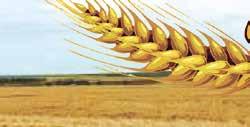



Sparked by a love for fast cars, Ransom started his repair business in 1982. This self-taught mechanic added onto his shop in 2000 to t semis into the structure.
“In high school, I had no time for sports, so I started making cars go fast,” he said. “I still have my ’55 Chevy that I bought in 1978.”
Turn to RANSOM | Page 13

A neighbor with a eet of milk trucks took a liking to Ransom’s work and told him, “If you’re smart enough to make cars go fast, you’re smart enough to x my stuff.”
The repair shop operates as a separate LLC from the farm. Tyler works on semis, tractors, loaders, combines, trucks and cars. He xes transmissions, clutches, hydraulics, power take-offs and more. He also replaces tires on anything and everything.
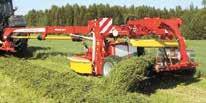



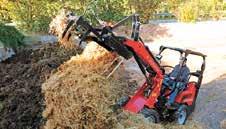



Tyler grew up with tools in his hands, learning the trade alongside his dad. On the last Tuesday in September, Tyler was busy working on a truck transmission, replacing fuel tanks in a semi as well as a clutch in another semi.
Up until four years ago, Tyler helped in the barn. He used to milk un-






til he developed an allergy to cows. He started breaking out in hives accompanied by a runny nose and watery eyes and could not breathe well in the barn. Tests conrmed the avid deer hunter was allergic to cows as well as deer.

“He was miserable, so I told him, ‘You run the shop, and I’ll milk the cows,’” Ransom said. “Mechanics is a young guy’s sport anyways. I can still do it, but it’s easier for Tyler than it is for me. He took over the shop and runs a tremendous business – better than I did.”
Ransom switched four cows into the barn at 8:15 and nished milking around 8:30. Cows are housed and fed in a freestall barn that contains 48 stalls



(above) John Ransom transfers a milking unit the morning of Sept. 27 on his farm near Avalon, Wisconsin. Ransom milks in a 28-stall stanchion barn. The cows are housed in a freestall facility.

(le ) John Ransom replaces the acid tank in the milkhouse a er wrapping up morning milking at 8:30 a.m.



MADISON, Wis. – After being delayed two years by the coronavirus pandemic, Brown Swiss breeders and enthusiasts from around the world gathered Oct. 1-5 in Madison for the 11th annual World Brown Swiss Conference.
The conference, hosted by the Brown Swiss Cattle Breeders’ Association of the USA, welcomed visitors from 16 countries to take part in farm tours, listen to conference speakers and attend the 55th World Dairy Expo, including the International Brown Swiss Show and World Premier Brown Swiss Sale.
The tour traveled to Waukesha Oct. 1 to visit Cozy Nook Farm, operated by Tom and Joan Oberhaus and their family, Dan and Britney Gerrits and Charlie and Amie Simac.



Cozy Nook Farm is home to 75 registered Brown Swiss and Guernsey cows. The farm also grows 20 acres of


pumpkins, corn, gourds and squash to operate a fall market.

Cozy Nook Pronto Twlyght 4E-92 laid the foundation for the herd’s breeding success in the Brown Swiss breed, having raised many inuential bulls.

Following the tour of Cozy Nook Farm, the conference tour bus traveled to Freeport, Illinois, to visit Triangle Acres Farm, operated by John and Wendy Korth and their children Ben and Becky. The Korths have help from longtime employee Tim Ritschard.

Triangle Acres Farm has been in the Korth family for more than 75 years. They milk 87 registered Brown Swiss cows.

The most impactful cow family in the herd is one that descends from a cow named Collection Polly. The family has placed two bulls into stud.
The nal stop for the rst day of tours was Voegeli Farms LLC of Monticello, which is owned and operated by Bryan, Jimmy and Christopher Voegeli and their families. Home to 250 milking cows, the farm’s milk is used for the creation of Chalet Cheese Cooperative and Yodelay yogurt. The Voegelis recently installed a robotic milking system.
Turn to BROWN SWISS | Page 16
are the cornerstone of Voegeli Farms, and the herd boasts more than 250 All-American nominations over their long history. One highlight of the herd is the Madora cow family, which has produced a string of 16 generations of Excellent cows, with several more generations of potential Excellent cows on the ground.
To top off the day of touring, a social was held on the farm that featured Jimmy Voegeli’s band, The Jimmys.
For the nal day of farm tours, conference attendees crossed the Mississippi River Oct. 2 to head to Hilltop Acres Farm of Calmar, Iowa. A seventh-generation farm owned

by Dennis and Barb Mashek and their sons, Josh and Tanner, Hilltop Acres is home to 450 milking cows.
Well-known in the Brown Swiss breed for the genetics produced by their herd, the Masheks give much of the credit to two cows: Hilltop Acres Blend Jillette and Hilltop Acres Jetway Dixie. Both families have produced several sires as well as daughters with breed-leading genetics.
Conference speakers were the mainstay of the agenda for the third day of the conference, Oct. 3.

Secretary of the Wisconsin Department of Agriculture, Trade and Consumer Protec-

tion Randy Romanski welcomed the international guests as well as those from other parts of the U.S. He said the Brown Swiss breed plays an important role in Wisconsin’s vital dairy industry.
“Agriculture and the dairy industry are our strengths,” Romanski said. “In Wisconsin, 90% of our milk is made into cheese, and 90% of that cheese is exported out of state.”
Romanski also said highcomponent milk is important to the state’s economy.
Speakers from Europe, South America and the U.S. shared intriguing topics and ideas.
Martin Rust, vice director of Switzerland’s Braunvieh Schweiz, spoke about the opportunities of increased genomic testing; while Franciska von Fedak, of Columbia, spoke
about the value Brown Swiss cattle have for those dairy farming in warmer climates, making them an ideal breed for dairy farmers in Central America and South America.

Other speakers included Dr. Reiner Emmerling of Ger-













many, Urs Shuler of Switzerland, João Durr of Brazil, Enrico Santus of Italy, and U.S. speakers David Erf, David Kendall and Kevin Ziemba.

A global breeder panel – featuring Clément Servin of France, Jonny Lockhead of Scotland, Josef Müller of Germany, Tanner Mashek of Iowa and Joe Loehr of Wisconsin – allowed conference attendees to hear of how management practices vary.

The nal two days of the conference were spent at WDE where those in attendance witnessed Cutting Edge Thunder Faye repeat as the grand champion selection of judge Gerrit DeBruin of Lake Mills.

Following the show, the World Premier Brown Swiss Sale took place and averaged nearly $8,000 on 27 lots. Six embryo packages averaged $9,750. Buyers came from nine states as well as Canada. The high-selling individual, consigned by Dennis Mashek of Hilltop Acres, was Hilltop Acres J Promise ETV, which sold for $28,500 to STgenetics.
Typically held every four years, this year’s World Brown Swiss Conference marked the rst time since 2000 that the event has been held in the U.S. According to Norman Magnussen, the executive secretary of the Brown Swiss Cattle Breeders’ Association of the USA, American breeders were enthusiastic to host the event.






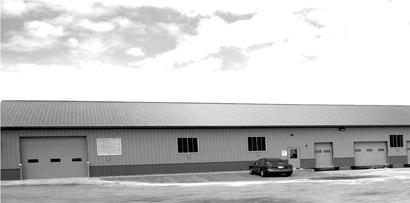



“The global breed interest is a direct result of component pricing, heat tolerance, calm temperament, milk quality, sire selection and a pure love for the Brown Swiss cow,” Magnussen said. “Demand for Brown Swiss genetics is at an all-time high with a world population of well over 5 million head. We want to keep that momentum going. It is more important than ever to hold onto our critical role in improving dairy genetics worldwide.”



250 cows, 320 acres
We did 14,000 bushels of high moisture corn in late September. It was 26% moisture. We did the 90 acres of soybeans Oct. 3 and they ran in the mid 40’s. On the low ground it pushed 60 and in the high ground it was really poor; we got too dry. This week everybody in the neighborhood switched to corn, it’s coming out really fast. We did 30 bales of soybean yesterday. We are waiting for the neighbors’ corn stalks to dry down before we make them. We try to do 400 bales. The roll, rake and bale them and we pick them up. The manure pumping is done, we did that after silage.








40 cows, 340 acres
We chopped corn silage Sept. 24. It ranged from 4’ to 10’. We filled two 20x65 silos. It was shorter on the sand ground we have. We are getting ready to start combining corn. I tested some and on the heavier ground it was 22% moisture and on the lighter ground it was 16%. Some people are combining corn. We have a neighbor working on earlage. I think more soybeans are out then in the field in this area. There has been a lot of corn stalk bales made in the area.

300 cows, 430 acres
We got our corn chopped. We started in late September and finished Oct. 3. We had a really good corn silage harvest. We chopped 250 acres and put it all on a pile. Then we seeded a cover crop in all our corn acres. We used mostly rye but we also used some clover and radishes. We seed our cover crops and then apply our liquid manure with minimum till injectors. We hauled our heifer manure on one of the corn fields. A lot of our neighbors are working on soybeans.
300 cows, 650 acres
In the past three weeks we have seeded winter wheat, but we are not sure how well it will germinate because of lack of rain. We finished soybeans last Thursday (Oct. 6), and the yield was down a little, but still ok. We will start combining corn today (Oct 12) and it is at 20% moisture. Corn silage is done and we filled 12 10.5 ft by 250 ft bags. Which is down about 20% of what we normally get. We baled bean straw and corn straw. We started tillage and everything but corn ground and 20 acres of bean ground is done. Overall, we have been very busy, because we haven’t had any rain we just keep plugging away.
100 cows, 540 acres

Lot of people around here are taking beans out. Some have started corn, but most are waiting for it to dry down a little more. We are done with silage and earlage. Filled a bag and a pit with silage and the earlage we filled a silo. We will pick some corn this weekend. I sampled our corn this past Monday and it was at 24% moisture. We fenced out our alfalfa fields and put the cows out on there for the fall.

41 cows, 205 acres
We will begin harvesting our corn and our soybeans this week. We combined a little corn on Sunday, and it was 16.1% moisture. It’s been reported that the corn is yielding from 160 to over 200 bushels per acre. The soybeans are yielding anywhere from 35 bushels per acre to the upper 50’s. We plan to make corn stalk bales as soon as we can. We and our cows are thankful for the cooperative weather this fall. Last fall it was so wet that we couldn’t get into the fields and the cows had to stay in the barn.



130 cows, 269 acres





140 cows, 160 acres

NATHAN KLING

530 cows, 1,700 acres
Last
My son-in-law has all the soybeans out. He said they ran 66 bushels an acre and above. He started harvesting corn on the earlier planted seed and it was at 22% moisture and around 220 bushels an acre. I am letting mine dry in the field a little longer. We chopped 45 acres of the corn we planted on the rye fields Oct. 1-2. It wasn’t quite as tall as the earlier stuff we harvested. I would say 80% of the soybeans are out and the farmers are just getting a good start on corn. We’ve been busier than heck.
JAMIE HAAG
220 cows, 520 acres
No rain that amounts to anything. 2/10 of an inch a few weeks ago. Things are getting dry. Guys are going hard at corn chopping. A lot are done and are working on beans, shell corn or high moisture corn if they’re ready.
I see more combines and semis rolling than choppers lately.
Last 3 Weeks
Since April 1 25.2”
Probably 85% of corn silage is done in our area. There is a lot of manure hauling going on and cover crops going in. We finished corn chopping a couple weeks ago and got two bunkers filled.
60
330 acres
Last 3 Weeks
Since April 1
The soybean yields in this area have been pretty impressive, ranging from 75 – 80 bushels per acre. Overall, the corn has been pretty disappointing. We received a few rains in August, and that helped add some tonnage. Our silage corn yielded 22 –25 tons per acre, compared to 31 tons per acre last year. We always harvest our silage at 71% moisture. There aren’t many people making corn stalk bales yet as many of the stalks are still green and wet. We remain thankful even though the yields were below expectations.
240 Cows, 750 acres
Our corn silage is done, the chopper said it ranged from 61% to 66% moisture. We did 210 acres in two days and it ran between 17 and 21 tons per acre, which is pretty average.
The dry weather we had this year really shortened the tonnage.

RAINFALL TOTALS
Last 3 Weeks
The grain level does seem god, as the ears were all good-sized and you could see grain as you were packing. Our high moisture corn will probably go into November. The other day it was still at 35% moisture on the kernels and the husks really haven’t started to open yet. We put in 35 acres of radishes and clover as a cover crop. Next week we are planning to get some manure hauled.
Since April 1 21.35”
Last 3 Weeks
0.9”

Since April 1 23.35”
We had our killing frost here on Sept. 28. We started our corn silage Sept. 26 and finished up Sept. 30. The yield was pretty average, which we were happy with considering the lack of rain this year. Most of the corn silage around here is done, there are just a few guys still wrapping things up. Some of the bigger dairies have started hauling some manure. Some guys have started their soybeans. Ours are ready, we are just waiting for the custom guy. We sewed some rye for straw and we have some more to put in for spring forage.

400 cows, 1,675 acres
We got all of our corn silage done Sept. 24. Since then, we’ve been doing a lot of beans – both for ourselves and custom work. We started beans on our farm around Sept. 30. We also planted 200 acres of wheat and put in about 70 acres of triticale. We baled 135 bales of corn fodder Oct. 6 for bedding.

Last 3 Weeks Since April 1 32.3”
0.10”


On Oct. 8, we cut 100 acres of sorghum, which we started chopping Oct. 11 but got rained out. We feed a little sorghum to our cows, but most of it goes to heifers.
RAINFALL TOTALS
Last 3 Weeks
Since April 1 13.9”
A small amount in the last 3 weeks. Maybe a half inch. We are chopping and it’s dusty out in the fields. All the swamps and ponds are dried up. Have been empty since July. WE could use some moisture for next year. We finished chopping silage yesterday and have some snaplage this week. Hopefully wrap up corn harvest by end of this week. We got hit with frost 2 weeks ago and once that hit everything hit at once. Most of the chopping in the area is done and a lot of people have moved on to beans. We are going to start planting rye for cover crops today.
DUANE DUCAT
1,600 cows, 2,500 acres
RAINFALL TOTALS
Last 3 Weeks
Since April 1 17.01”
We’re still chopping corn and had about 400 acres left after Oct. 11. It’s been an excellent harvest. Our later planted corn was pushing 70% or higher for moisture, so it wasn’t dry enough to do. Thankfully, not all of it has been impacted yet by frost. We’ll get back at it when the moisture drops. We planted a bunch of cover crops after corn was harvested. Our interseeded crops look quite well, but we did add some rye to those areas also. We planted around 200 acres of wheat Sept. 25. Our cover crops are starting to come up as well as the wheat.




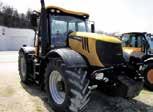

















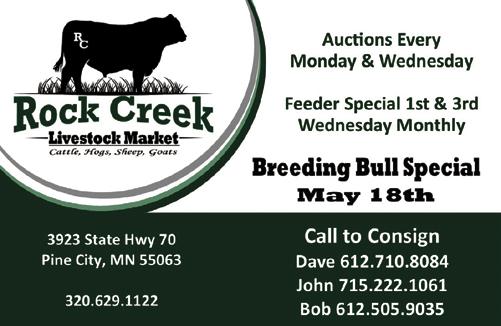



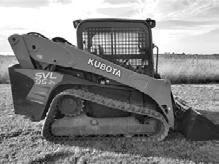
















Large Rounds 13.6 19.29 141.43 1 25.5 $150.00
527 Large Rounds 11.95 9.6 78.71 1 9.69 $100.00
545
Large Rounds NO TEST 1 14 $35.00
550 Large Rounds 22.39 6.39 84.32 1 34 $25.00
555 Large Rounds 12.58 18.69 130.23 1 19.75 $145.00
558 Large Rounds 12.58 18.69 130.23 1 22.59 $170.00
561
Large Rounds 14.87 22.28 43.47 1 22.27 $170.00
563 Large Rounds 13.23 11.71 79.81 1 34 $20.00
509 Large Rounds 12.64 14.6 98.1 2 16.83 $145.00

511 Large Rounds 15.85 22.11 137.67 2 20.29 $170.00
514
515
521
Large Rounds 14.7 16.31 131.08 2 20.96 $150.00
Large Rounds 14.7 16.31 131.08 2 19.91 $150.00
Large Rounds 20.04 17.84 149.28 2 16.55 $135.00
523 Large Rounds 13.69 16.08 110.88 2 22.59 $175.00
525 Large Rounds 14.9 22.31 130.96 2 24.46 $160.00
526 Large Rounds 16.97 17.5 112.24 2 24.59 $155.00
547 Large Rounds 14.9 17.55 106.89 2 18.89 $140.00
548 Large Rounds 21.95 17.78 111.29 2 20.55 $140.00
551
Large Rounds 10.49 14.72 92.64 2 14.48 $130.00
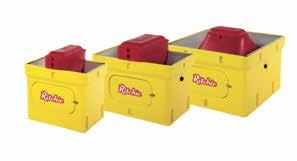
553 Large Rounds 15.12 20.03 138.9 2 13 $50.00
557 Large Rounds 18.13 17.43 117.68 2 20.46 $125.00
559 Large Rounds 15.38 15.73 107.93 2 24.88 $165.00
562 Large Rounds 15.38 15.73 107.93 2 25.83 $150.00
566 Large Rounds 15.38 15.73 107.93 2 25.8 $150.00
570
Large Rounds 15.12 20.03 138.9 2 31 $45.00



572 Large Rounds 14.07 18.29 121.42 2 20.05 $135.00

574 Large Rounds 2 7.43 $140.00
508 Large Rounds 15.71 20.18 157.37 3 22.47 $185.00
513 Large Rounds 14.43 19.78 130.02 3 18.76 $170.00
518 Large Rounds 14.06 18.9 146.15 3 22.57 $170.00
539 Large Rounds 13.66 22.23 126.69 3 14 $40.00
552 Large Rounds 15.71 20.18 157.37 3 23.42 $190.00
554 Large Rounds 22.39 6.39 84.32 15 $20.00
560 Large Rounds 22.39 6.39 84.32 34 $20.00
506 Large Squares 11.01 19.19 132.67 1 19.99 $175.00
519 Large Squares 12.56 17.76 126.97 1 19.91 $190.00
520 Large Squares 11.53 20.24 118.96 1 24.18 $160.00
501 Large Squares 14.82 21.8 146.35 2 25.11 $170.00
503 Large Squares 14.22 20.15 125.04 2 25.35 $170.00
531 Large Squares 16.07 15.52 98.26 2 25.74 $145.00
533 Large Squares 11.02 21.03 135.68 2 25.32 $215.00
541 Large Squares 14.64 13.75 89.6 2 18 $35.00
542 Large Squares 12.43 15.8 108 2 23.47 $160.00
577 Large Squares 11.7 1195 102.92 2 22.51 $160.00
502 Large Squares 11.64 16.24 99.43 3 24.19 $150.00
576 Large Squares 11.64 16.24 9.43 3 25.41 $165.00
499 Medium Squares 13.11 21.4 161.95 1 24.77 $160.00
505 Medium Squares 13.02 18.87 149.59 1 26.46 $185.00

535
573
512
534
Medium Squares 13.03 18.09 133.33 1 23.05 $155.00
Medium Squares 18.71 9.5 82.36 1 20.78 $55.00
Medium Squares 15.27 15.48 110.27 2 23.79 $155.00
Medium Squares 13.93 22.72 160.88 2 28.21 $220.00


538 Medium Squares 12.81 21.7 116.38 2 9.79 $130.00
500 Medium Squares 3.9 22.16 170.97 3 25.85 $250.00
524
Medium Squares 14.1 25.45 169.68 3 20.07 $210.00
529 Medium Squares 16.59 24.59 152.59 3 24.86 $200.00
536
537
540

569

544

546
522
549
556
568
571
507
Medium Squares 11.47 23.04 191.66 3 26.58 $280.00
Medium Squares 11.89 22.85 182.79 3 25.94 $285.00

Medium Squares 17.68 27.66 176.34 3 10.36 $150.00
Medium Squares 14.26 18.01 123.73 3 12.77 $145.00
Medium Squares 13.56 13.76 114.21 4 30.17 $225.00
Medium Squares 13.59 19.98 173.72 4 16.44 $230.00
Large Rounds STRAW 34 $55.00
Large Rounds STRAW 34 $50.00
Large Rounds STRAW 34 $50.00
Large Rounds STRAW 38 $30.00
Large Rounds STRAW 20 $40.00
Large Squares STRAW 22.38 $120.00
Large Squares STRAW 25.86 $130.00


517 Large Squares STRAW 22.19 $130.00
564
Large Squares STRAW 18.59 $120.00
565 Large Squares STRAW 18.33 $120.00
567
532
Large Squares STRAW 13.77 $120.00
Medium Squares STRAW 22.37 $145.00


530 Small Rounds STRAW 17 $30.00


575
WHEAT STRAW 34 $60.00
Large Rounds BARLEY STRAW 20.42 $70.00

528 Large Rounds CORN STALKS 34 $40.00
Large Rounds CORN STALKS 34 $42.00


September ended with a sense of
nality. We were able to close our last bag of silage just before a killing frost drained the corn plants of all color and life. Now, we wait for the moisture to drop a bit before we start putting up high-moisture corn in the Harvestore.
The harvest in my garden is a different story. Luckily, I was able to save my tomato plants from the cold temperatures with a collection of old sheets and blankets. My plants are way behind schedule as I have only been able to
ve red tomatoes on all of the vines. There are plenty of green tomatoes just waiting for a bit more sunshine and warm fall days before they turn a bright ripen red.
These last few cold nights and cool days have me craving soups and stews. I popped into the creamery the other day and ran into Alice. I always enjoy talking with her and swapping recipes. Here are a couple of hers that have become hits in our house. I know the rst recipe calls for the oven to be on for ve hours but gure it as a cheaper way of warming up the house without having to turn on the furnace. And, what is stew without biscuits? These live up to their name of being perfect. Enjoy.

2 pounds round steak, cubed
2 cups diced carrots
6 medium potatoes, diced
1 onion, diced
1 teaspoon dry parsley
2 cans golden mushroom soup whisked together with 1 can water (or plain mushroom soup)
1 teaspoon salt
Mix everything together in Dutch oven. Bake at 275 degrees uncovered for ve hours. Stir whenever you think of it. Meat is raw and not browned.
Cranberry fall chicken by Alice Nordmann
1 can cranberry sauce
1 package onion soup mix
1 cup French dressing
Chicken breasts or chicken legs
Mix cranberry sauce, soup mix and French dressing together. Place raw chicken in greased pan. Pour soup mixture over chicken. Bake uncovered at 350 degrees until chicken is done in an hour or a bit longer.
Cabbage roll soup
4 cups beef broth
8 ounces tomato paste

1/2 cup uncooked long grain rice
1 bay leaf
3 teaspoons brown sugar
2 teaspoons dried parsley
2 small spoons of olive oil
Salt and pepper to taste
1 pound ground beef
4 cups cabbage, chopped
1 onion, diced
2 carrots, sliced or shredded
1 teaspoon garlic powder
In a large pot, brown beef in oil, season with salt and pepper. When almost done, add onions and garlic. Stir and cook another four minutes. Add remaining ingredients. Bring to a boil. Reduce heat, cover and cook 25 minutes or until rice is done. Green beans would be good in this too.
Perfect biscuits
3 cups our
3 tablespoons sugar

1/2 teaspoon salt
4 teaspoons baking powder


1/2 teaspoon cream of tarter
3/4 cup cold butter, cut into cubes
1 egg 1 cup milk
Mix dry ingredients together. Cut in butter, will be chunky. Add egg and milk, will be sticky. Knead 1015 times. Roll 1/2-inch thick. Cut into biscuits. Put on cookie sheet lined with parchment paper. Bake at 450 degrees for 10-15 minutes.
As their four children pursue dairy careers off the family farm, Natalie and Mark are starting a new adventure of milking registered Holsteins just because they like good cows on their farm north of Rice, Minnesota.
ARCADIA,
FREEPORT,
FREEPORT,
JANESVILLE,


LANCASTER,
MARSHFIELD,
MELROSE,
MENAHAGA,
PENNOCK,
RICHLAND CENTER,

VALLEY,
SAUK CENTRE,


SPARTA,
CHARLES,
WITHEE,






From the kitchen of Lorilee Schultz of Orangeville, Illinois
1 cup jasmine rice
1 cup cold water
1 teaspoon cinnamon
1/2 teaspoon nutmeg
1 tablespoon unsalted butter


2 cups whole milk
1/3 cup sugar
1 teaspoon vanilla extract

2 pinches sea or table salt
1 large egg, beaten
Toppings: Raisins
Cinnamon
Add 1 cup rice to inner pot. Add 1 cup cold water. Add cinnamon and nutmeg. Give it a quick mix. Pressure cook at high pressure for 5 minutes, then natural release for 10 minutes. After 10 minutes, release remaining pressure. While the rice is pressure cooking, beat a large egg in a large glass container. Add 2 pinches sea salt, vanilla extract and sugar, then mix well. Pour in whole milk, then mix well. Pour milk mixture into the cooked rice. Bring the rice pudding mixture to a simmer. Stir occasionally with a spatula. As the rice pudding mixture heats up, the starch will be released and it will start to thicken. Add in butter. Continue to stir until the rice pudding reaches desired consistency. Turn off the heat. The rice pudding will thicken as it cools down.




16 ounces uncooked elbow macaroni
4 cups chicken broth
2 tablespoons butter

1 teaspoon hot pepper sauce



1 teaspoon garlic powder
1/2 teaspoon pepper
1/2 teaspoon salt
2 cups shredded cheddar cheese
1 cup shredded mozzarella cheese
1/2 cup shredded parmesan cheese
1/2 to 1 cup milk
Add the uncooked macaroni, chicken broth, butter, hot sauce, garlic powder, pepper and salt to the Instant Pot. Place the lid on the pot and set to sealing. Cook on manual function, high pressure for 5 minutes. Then, do a quick release. Add the milk, then the cheese to the pot in 3-4 handfuls, stirring in between each addition until smooth and creamy. Season as necessary to taste.



65 Holstein and Cross bred Certi ed Organic dairy cows. Crosses include Norwegian Red Cross, Jersey Cross, Ayrshire Cross and a few Jersey dairy cows. Family farm over 34 years! Certi ed organic over 15 years. Milked in tiestall, avg. 65# 4.2BF 3.1P 130scc. Several top cows milking 90-100# with very little protein fed. Many many years of top bulls used. VERY NICE organic dairy herd, well conditioned, with several outstanding individuals! Coming from Jim Vangness, Clear Lake WI
118 Holstein and Cross bred Certi ed Organic dairy cows and heifers. Herd is predominantly Holstein, Red Holstein, and some NICE Cross breds. Parlor milked, rotationally grazed, housed on a bedded pack in the winter, cows averaging 55# 3.94BF 200scc. Herd is fully vaccinated. ALSO selling (9)short bred heifers, bred Angus (14)yearling open heifers! Many very nice young cows sell! Coming from Vernon County
10 Holstein and Fleckveih/Holstein Cross Certi ed Organic Springing Heifers. All bred Angus. Owner sold his certi ed organic dairy herd and selling heifers as they spring up. Schneider Farms, MN
11 Fleckveih/Normande Cross heifer calves, 150-250# 100% certi ed organic grass fed, A2A2 sired, VERY SHARP!!!
Registered Holstein Dairy Bull, proven, good temperament, DOB 7-15-21, sired by Siemers Rengd Parfect-ET, dam Sandy-Valley Saga-ET.
Apple salad
4 apples, cored and chopped in 1-inch pieces


1/2 cup chopped celery 1/2 cup raisins, dried cranberries or dried cherries
Mix together.
1/2 cup chopped walnuts or pecans
1/2 cup coconut flakes (optional)
2 cups Greek yogurt
Has been a quality market for MN dairy farmers for over 100 years. MN producers provide one of the country’s most distinctive brands of cheese that is still made using the same Old World craftsmanship and has been combined with cutting-edge technology to produce cheese that delivers unforgettable taste with unparalleled quality. MN Dairy farmers and Bongards, quality that stands the test of time. We offer a competitive base price, premiums, and the best eld representatives in the industry.
13200 Co. Rd. 51

Bongards, MN 55368





(952) 466-5521



Fax (952) 466-5556
110 3rd Ave. NE
Perham, MN 56573 (218) 346-4680








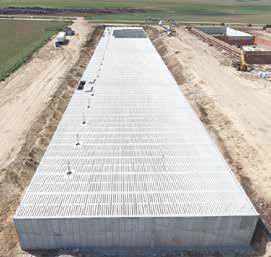


Fax (218) 346-4684
